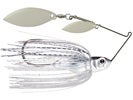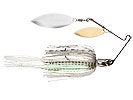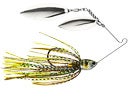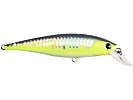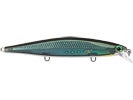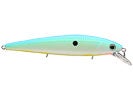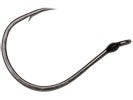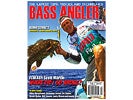
The Great Lakes are an amazing fishery, but can leave even the most experienced angler pulling out their hair at times. To help shed some light on how best to target smallmouth , I sought out advice from the seasoned veteran, Bob Izumi. Bob is a professional tournament angler who competes across North America and has fished all over the world. He is also the host of, “The Real Fishing Show”. Bob has been exploring the Great Lakes region his entire life, consistently locating and boating monster bass.
Location:
It does not matter if it is late summer, or the first few days of winter; 90% of smallmouth will be caught on some sort of change or transition in structure. This could simply be a darker spot on the bottom, flat rocks turning into gravel, or a ledge created by boulders. If the water is too deep to physically see the bottom composition, you must rely on your graphs to find sudden changes in depth or density.
Piles or lines of rocks on their own should be given extra attention. You can find many of these clusters out in the middle of flats, where massive chucks of ice have pushed scattered rocks and collected them in one area. Smallmouth will use these unique bunches of rubble as ambush zones for baitfish or hunting grounds for crawfish and gobies.
Even before you head out onto the water, you can locate some of the more obvious spots from the comfort of your own home. Obtain a map of your target lake (ensuring it displays contour lines) and study a small area where you plan to fish. Mark a few locations that show steep drops in depth or underwater islands and you can literally save yourself days of on-water searching. Also take note of any above-water points or islands as you can usually find abundant rock or shallow-to-deep transitions nearby.
As a general rule, from late summer to early fall, smallmouth will be cruising and feeding in their shallower haunts. This time of year, Bob likes to start in a depth of 10 to 12 feet of water. If you are having trouble locating fish, expand your search both into deeper and shallower water until you find signs of life.
As the calendar months pass, and the water temperature drops in between 60 and 50 degrees Fahrenheit, smallmouth will start their transition into deeper water. This changeover traditional occurs in late September to October, when the trophy smallmouth are beginning to reach their peak weight. In these temperatures, Bob will start his day in about 25 feet of water and branch out from there. Smallmouth can even be caught much later, when the water temperature plunges into the 40’s. If you are fishing in early winter, a water depth of 35-45 feet is where you will usually find the smallmouth.
Lure Selection:
Earlier in the fall, when the days are long and the autumn sun is still warm, Bob heads to his shallow-water spots with three baits rigged on his deck: a spinnerbait, a jerkbait and a plastic stickbait.
When Bob is fishing a large area and wants to cover water, he either reaches for the spinnerbait or jerkbait. Both of these baits will trigger active fish, and also provide an opportunity for follow-up situations. Bob’s favorite spinnerbaits for this scenario are 1/2 to 3/4 ounces in weight and double willow leaf in style. Since smallmouth are often hunting baitfish, they can usually be tempted by metallic flashes of gold and silver. For this reason, Bob ensures that one of the blades on his bait is gold and the other is nickel. This provides a dazzling combination of flashes that big fish cannot resist. For the main body and skirt, Bob recommends either a white/chartreuse combination or a very natural clear/green-blue presentation which mimics the colors of main-lake bait.
If the fish are not impressed by his spinnerbait or jerkbait, Bob reaches for a plastic stickbait. His favorite is a Berkley Havoc Flat Dog, in a green pumpkin or watermelon color. He will wacky rig this bait, making long casts, then lets it sit on the bottom for extended amounts of time. Often the strike will come on the initial fall of the bait, or as it sits after that first fall. Working a bait like this requires more patience than a jerkbait or spinnerbait but can be equally effective- especially in high pressure areas. A stickbait is also perfect for those fish that follow your other baits to the boat.
Presentation:
When retrieving the spinnerbait in shallow water, Bob is often “burning” it back to the boat, reeling at a very fast rate. Unlike largemouth, smallmouth bass are not traditionally ambush predators and have no problem charging across an entire flat in pursuit of your lure.
Beside his rod rigged up with a spinnerbait, you will find another ready with a suspending jerkbait. Again, both metallic and translucent minnow imitations work well here. Bob prefers presentations that also contain hints of blue, green or brown. The retrieval method that typically works best for a jerkbait is a series of twitches, followed by a pause. It is important to point your rod tip back towards your bait after each twitch. This provides a small amount of slack in your line that will allow the bait to dance side to side. If you have not worked a jerkbait previously, give it some time. Every angler finds their own rhythm that tempts fish into deciding to strike.
Smallmouth are notorious for following jerkbaits back to the boat. There is nothing that will get your heart pumping like a giant bronzeback chasing your bait, poised and ready to strike. When you notice a fish in pursuit, try giving your bait a couple of extra aggressive twitches, then let it sit in front of their nose. If you are having trouble getting fish to commit, play with the speed and cadence of your retrieve. If they still are not convinced, try changing to something a bit unnatural. A bright, funky colored option can drive shallow water fish crazy when a minnow imitation is not doing the trick.
Bob’s biggest secret for fishing shallow water is a simple one; make every cast as long as possible. Often the water you are fishing will be gin-clear and a smallmouth’s eyesight is exceptional. Many anglers spend the majority of their time casting to fish that have already been spooked by their presence. The farther you get your bait away from the boat, the better your chances of hooking up.
Click Link To Shop: Bass Angler Magazine
Big Water Bronzebacks In The Fall Fall 2015 Bass Angler Magazine (Alex Vandelaar pg. 78 – 81)
- 13 colors available
- 9 colors available
- 5 colors available
- 64 colors available
- 14 colors available
- 33 colors available
- 22 colors available
- 12 colors available
- 1 colors available


